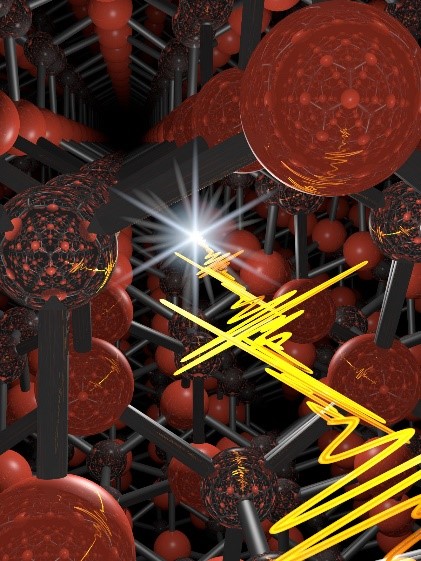An international team of researches and engineers have demonstrated the ability to not only control the peaks within laser pulses, but also to twist these incredibly short pulses of light. A pulse lasts a few femtoseconds long (one quadrillionth of a second, or about the time it takes for the family dog to bolt out the front door without its collar).
The discovery could lead to computers that operate up to 100,000 times faster than current ones.
It’s a big step toward “lightwave electronics,” and, eventually, quantum computing, says Mackillo Kira, a University of Michigan professor of electrical engineering and computer science who was involved in the
research.
Electrons moving through a semiconductor crystal can run into other electrons, releasing heat. But in lightwave electronics, electrons guided by ultrafast laser pulses are less likely to bump into each other because their travel time is so short, lowering the statistical likelihood of colliding.
"In the past few years, we and other groups have found that the oscillating electric field of ultrashort laser pulses can actually move electrons back and forth in solids,"
says Rupert Huber, a professor of physics at the University of Regensburg who led the experiment. "Everybody was immediately excited because one may be able to exploit this principle to build future computers that work at unprecedented clock rates—10 to a hundred thousand times faster than state-of-the-art electronics."
But first, the researchers needed to be able to control electrons in a semiconductor. Groups of electrons inside a semiconductor crystal were mobilized using terahertz radiation—the part of the electromagnetic spectrum between microwaves and infrared light.
The researchers shone laser pulses into a semiconductor. These pulses were very short, at less than 100 femtoseconds, or 100 quadrillionths of a second. Each pulse moved the electrons to a higher energy level that allowed them the freedom to move around.
By changing the orientation of the laser with respect to the semiconductor, the researchers found they could move the electrons in different directions through the crystal. For instance, they could run along atomic bonds or in between them.
"The different energy landscapes can be viewed as a flat and straight street for electrons in one crystal direction, but for others, it may look more like an inclined plane to the side," says Fabian Langer, a doctoral student in physics at Regensburg. "This means that the electrons may no longer move in the direction of the laser field, but perform their own motion dictated by the microscopic environment."
When the electrons emitted light as they came down from the higher energy level, they emitted much shorter pulses than the radiation going in. These bursts of light were just a few femtoseconds long, and showed where the electrons had moved.
"There are fast oscillations, like fingers within a pulse. We can move the position of the fingers really easily by turning the crystal," says Kira, whose group worked with researchers at the University of Marburg, Germany, to interpret Huber's experiment.
The crystal could also twist the outgoing light waves or not, depending on its orientation to the incoming laser pulses. Because femtosecond pulses are fast enough to intercept an electron between being put into an excited state and coming down from that state, they can potentially be used for quantum computations using electrons in excited states as qubits, or quantum mechanical bits.
"For example, here we managed to launch one electron simultaneously via two excitation pathways, which is not classically possible. That is the quantum world. In the quantum world, weird things happen," Kira marvels.
An electron is small enough that it behaves like a wave as well as a particle—and when it is in an excited state, its wavelength changes. Because the electron was in two excited states at once, those two waves interfered with one another and left a fingerprint in the femtosecond pulse that the electron emitted.
"This genuine quantum effect could be seen in the femtosecond pulses as new, controllable, oscillation frequencies and directions," says Kira. "This is of course fundamental physics. With the same ideas you might optimize chemical reactions. You might get new ways of storing information or transmitting information securely through quantum cryptography."
Huber is particularly interested in stroboscopic slow motion cameras to reveal some of the fastest processes in nature, such as electrons moving around within atoms.
"Our crystalline solids make for fantastic light sources in this field—with unprecedented possibilities for pulse shaping," he says.



